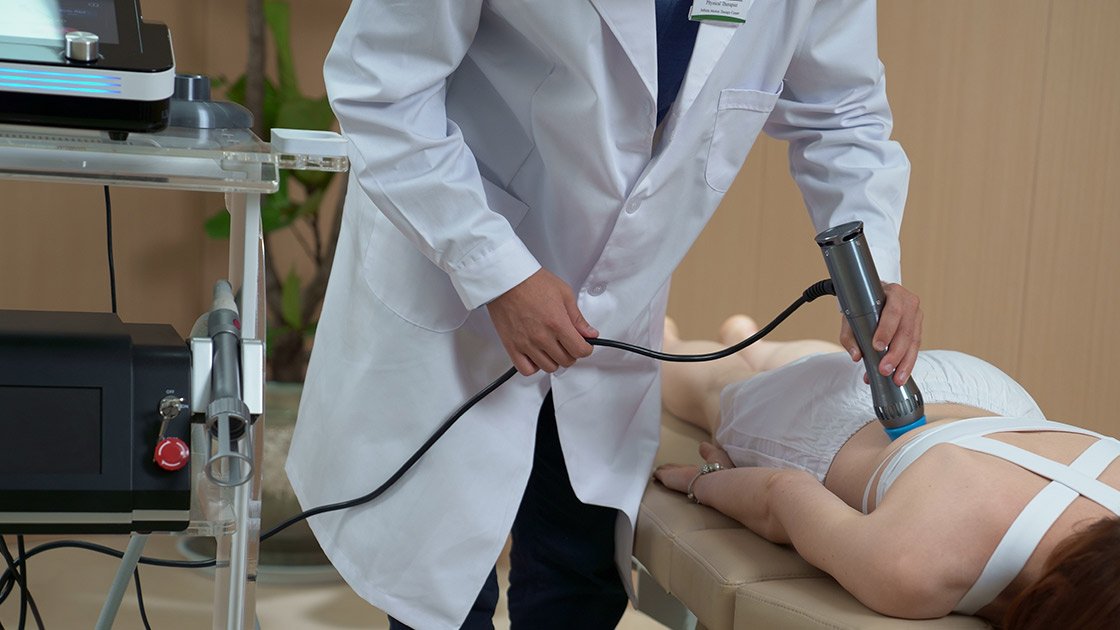Myofascial pain syndrome (MPS) is a common yet often misunderstood condition that affects countless individuals around the world. Characterized by chronic pain, muscle knots, and restricted mobility, MPS can significantly diminish one’s quality of life. Fortunately, there’s a beacon of hope on the horizon: shockwave therapy. In this article, we will delve into the world of shockwave therapy and explore its promise in providing relief to those grappling with the burden of myofascial pain.
Understanding Myofascial Pain Syndrome
Before we embark on the journey of shockwave therapy, let’s first understand the enigma of myofascial pain syndrome. MPS is a chronic pain disorder that originates in the fascia, the connective tissue surrounding muscles throughout the body. When trigger points or muscle knots develop within this tissue, they can cause pain that radiates to other areas, leading to a wide range of symptoms.
These symptoms can include localized pain, muscle stiffness, and even referred pain that may be mistaken for other conditions. The precise cause of MPS can vary, including muscle overuse, trauma, or stress, and it can affect anyone, from athletes to office workers.
Conventional Approaches and Their Limitations
Traditional approaches to managing myofascial pain include physical therapy, massage, medications, and injections. While these methods can provide temporary relief, they often fall short in addressing the root causes of MPS, leaving individuals seeking long-term solutions frustrated and in pain.
Furthermore, some individuals may not respond well to these conventional treatments or may experience adverse side effects from medications. It’s precisely in such cases that the promise of shockwave therapy shines the brightest.
The Emergence of Shockwave Therapy
Shockwave therapy, also known as extracorporeal shockwave therapy (ESWT), has gained recognition for its efficacy in treating various musculoskeletal conditions, including myofascial pain. Originally developed for the treatment of kidney stones, shockwave therapy harnesses the power of acoustic waves to stimulate natural healing processes within the body.
How Shockwave Therapy Works
Shockwave therapy involves the application of high-energy sound waves to the affected area. These waves penetrate deep into the tissues, promoting increased blood flow, collagen production, and cellular regeneration. This therapeutic approach jumpstarts the body’s innate healing mechanisms, effectively addressing the root causes of myofascial pain.
The Promise of Shockwave Therapy for MPS
- Pain Reduction: The primary goal of any myofascial pain treatment is pain reduction. Shockwave therapy has shown significant promise in providing substantial and lasting relief to individuals suffering from MPS. Many patients report a noticeable decrease in pain levels after just a few sessions.
- Non-Invasive and Low-Risk: Unlike surgical interventions, shockwave therapy is non-invasive. This means no incisions, anesthesia, or prolonged recovery periods. It also carries a low risk of complications, making it a safer alternative for many individuals.
- Enhanced Mobility: Myofascial pain often restricts mobility and can lead to muscle weakness. Shockwave therapy has the potential to improve joint and muscle function, allowing patients to regain their freedom of movement.
- Reduced Reliance on Medications: Many individuals with MPS rely on pain medications to manage their symptoms. Shockwave therapy can reduce this dependency, offering a drug-free path to relief.
Real-Life Success Stories
The promise of shockwave therapy becomes more apparent when we explore real-life success stories:
- Lena’s Triumph Over Chronic Pain: Lena had been grappling with myofascial pain for years, relying on a combination of pain medications and physical therapy. Frustrated with her limited progress, she decided to try shockwave therapy. After a series of sessions, Lena experienced a remarkable reduction in pain and an improvement in her overall quality of life.
- James’s Return to Athletic Glory: James, an avid athlete, had almost given up on his passion due to myofascial pain. He underwent shockwave therapy and was pleasantly surprised to find that not only did his pain diminish. But his athletic performance also improved, allowing him to return to his favorite activities.
Conclusion
The promise of shockwave therapy for myofascial pain is undeniable. This non-invasive, low-risk treatment option is changing the lives of individuals who have long suffered in silence. Shockwave therapy offers a ray of hope for those in search of lasting relief from myofascial pain by addressing its root causes and promoting natural healing.
If you or a loved one is living with myofascial pain, it may be time to explore the possibilities that shockwave therapy presents. The future of myofascial pain management is looking brighter than ever, offering the prospect of waving goodbye to pain and embracing a life of comfort and freedom.
